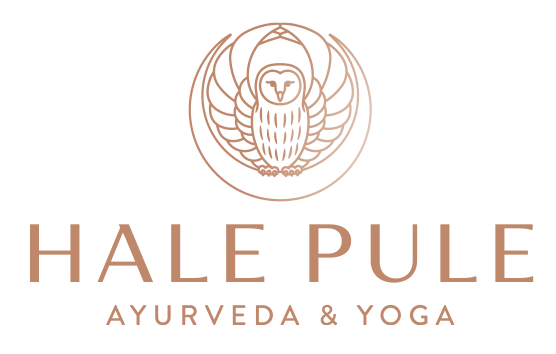
Inside your digestive system lives a whole universe, home to about 100 trillion microscopic organisms. Meet your intestinal flora, tiny bacteria that support your digestion by breaking down the food you eat into easily assimilated nutrients and getting rid of undigested matter.
In Ayurveda, digestive health is the source of whole body health. When your intestinal flora is well-balanced, symptoms like gas, bloating and constipation are rare and easily remedied. As a result, your ojas is stronger, leaving your body with better immunity. When this balance is disrupted, the reverse is true.
The benefits of takra, or buttermilk
Now that antibiotics are prescribed for everything from colds to scraped knees, it’s quite easy to make the connection between the way these drugs blindly kill all bacteria – the good ones that keep you healthy and the invasive ones – and the digestive imbalances that have become commonplace in the past few decades. But by consuming cultured foods, like takra, what we know as buttermilk, you can re-introduce these friendly bacteria into your intestinal tract and regain health.
Many people look to yogurt for their probiotics, but the benefit of takra is that it is not as sour, and will not increase pitta as easily (though during summer or times of high pitta, limit takra to once or twice a week).
One thing to know is that the buttermilk you see in the store is often a byproduct of butter making. That is not the same as takra, which is cultured buttermilk with the friendly bacteria we need. To be sure you are getting one with active cultures, make takra yourself. Once you have a culture, you just need to feed it about once a week, depending on how much you go through. The original culture will continue to be usable for years as long as you take care of it.
We’ve included a few recipes for using takra below. The first is instruction on how to make takra and keep your culture alive. The next is a simple buttermilk drink that you can enjoy three to four times a week with a meal. The other is for kambalika soup, a delicious combination of takra and split mung beans.
How to make cultured buttermilk
You'll need
4 cups organic whole milk (raw is ideal, unhomogenized is the next best option)
1 package buttermilk culture (fresh and organic if possible)
Here's how
Pour the milk into a large container and add the buttermilk culture. Do not stir or shake, as the culture is delicate. Cover with a cloth that breathes (fasten on with a rubber band to keep bugs away) and store at room temperature away from direct sunlight for 12 to 18 hours until the mixture is thick and tangy. In cooler weather it can take longer, so check it every few hours after the initial 12 hours.
When it is done, cover with a tight-fitting lid and refrigerate. Note that takra will not get any thicker after it has been refrigerated, so don't do this step until it is set. Allow to rest six hours in the fridge before drinking.
To make your next batch, reserve some of this cultured takra to use as your starter. About 1 cup takra per 1/2 gallon of milk is a good starting point.
Simple takra drink
If you find that you don't like the taste of takra, there is a good sign that you need it. Keep taking it, and the taste will change.
Serves 2
Preparation time: 5 minutes
Augmenting
You'll need
1/4 tsp. ghee
1/8 tsp. or less of two spices (ideas: fresh chopped ginger, black pepper, turmeric powder, brown mustard seed, fennel seed or powder, cardamom or cumin powder)
1/2 cup water
1/2 cup buttermilk
Here's how
Warm ghee in small saucepan, add the spices. When aroma comes up, turn heat down to low and add water. Let water get warm, but remove from heat before it becomes hot. Add the buttermilk into the warm water and whisk. Important: Don't add the buttermilk to hot water as it will kill the culture and lose the healing benefits.
Kambalika soup
This soup, made with a base of takra, ghee, split mung and spices, is balancing for most everyone (an exception is if you have significant kapha imbalance and need to avoid dairy altogether). Have kambalika two to four times a week for a month if you’re recovering from past antibiotic use or whenever your digestion feels compromised. It will quickly and deliciously restore your healthy intestinal flora to their natural levels and strengthen your agni.
Serves 2
Preparation Time: 15 minutes
Augmenting/Extractive
You'll need
1 cup fresh takra (cultured buttermilk)
½ cup water
2 Tbsp. split mung flour (grind split mung dhal in a blender or coffee grinder)
¼ tsp. fresh grated ginger
¾ tsp. mustard seeds
Pinch of asafoetida
Pinch of cumin seeds
Pinch of mineral salt
2 Tbsp. ghee
4 sprigs fresh mint
Here's how
Pour the buttermilk into a pan and add the water and ground split mung. Warm gently over low heat. You don’t want it to come to a boil or it will destroy the good bacteria.
Heat the ghee in a separate pan. Add fresh ginger, mustard seeds, cumin, asafoetida and salt. Cook over medium-low heat just until the aroma comes up (1 to 2 minutes).
After the buttermilk has warmed, but not boiled, add the ghee and spice mixture. Stir and let the mixture warm on low heat for a few minutes. Add more water if you would like a thinner consistency.
Garnish with fresh mint and enjoy.
Visit our Ayurveda Lifestyle page for kitchen essentials
